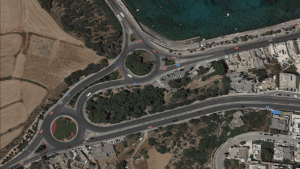Traffic flow simulations

Traffic behaves in a complex and nonlinear way, depending on interactions of a large number of vehicles. Despite having a population of less than half a million, Malta has one of the highest cars per capita in Europe, with the possibility of the number of cars on the road increasing faster than the population of the island. Thus traffic flow assessments to identify potential problems is of utmost importance both in the Maltese islands and also in fast-growing urban areas around the globe.
At QP, we utilise microsimulation to reproduce real world traffic conditions in a virtual model by simulating detailed individual vehicles behaviour on generated road networks.
Microsimulation models are used to predict the likely impact of traffic patterns resulting changes to the physical environment.
Prior to generating the model itself, QP carries out surveys of existing road networks to a level of detail that would include imaginary road markings which are not visible in the real world. Our QP modellers are able to achieve a high level of accuracy when reproducing these models. Traffic will be assigned based on actual traffic demand generated from various zones linked to the network which is captured using video. We carry out multiple data collection to ascertain the validity of the inputs and modelling through detailed calibration checks, matrix estimation and emissions assessments.
By simulating vehicle behaviour on the roads, the interaction of different parts of a road network can be clearly understood. This provides an excellent opportunity to test out any new traffic network management schemes to optimise ensure they integrate properly before costly implementation measures.
Article compiled by Steven Vella from QP Architecture Department